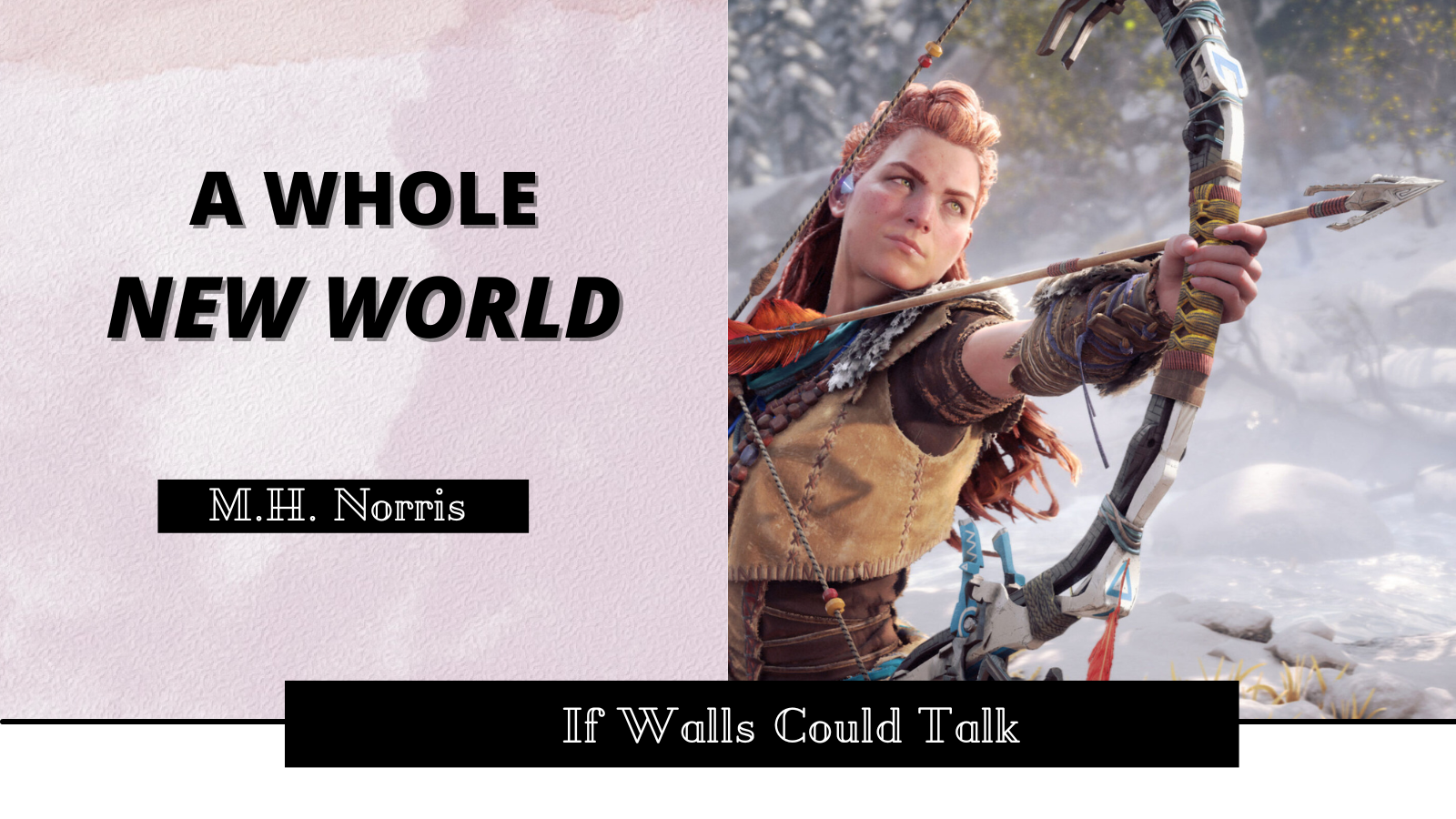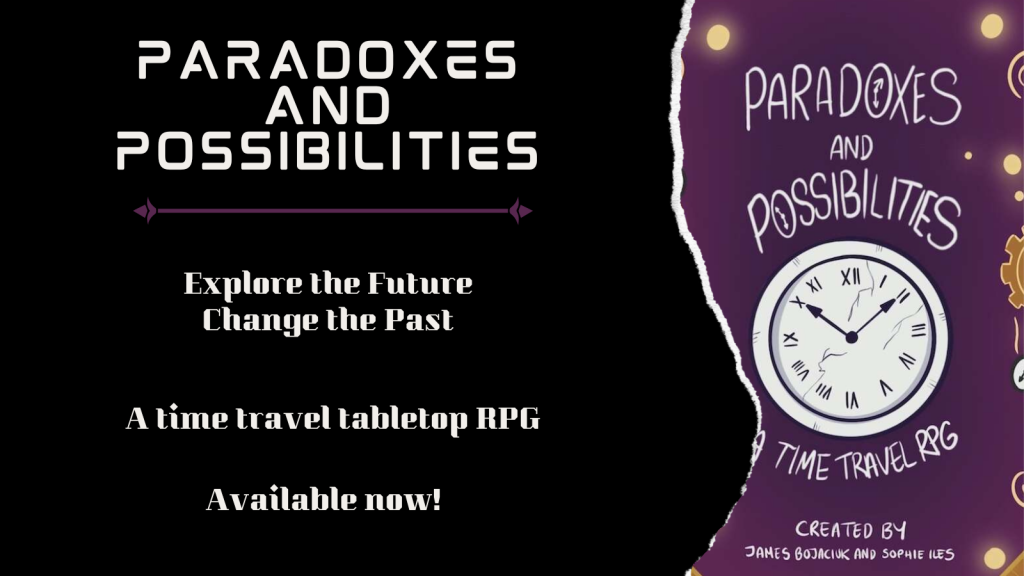
If Walls Could Talk: A Whole New World – The Art of World-Building
Buckle up, we’re talking video games this week.
One of my favorite things about video games is that they are able to immerse you into their world. You know, that feeling when you’re pulled into the story and they make it (and the people you meet along the way) so real.
Horizon Zero Dawn and its sequel are some of my favorite examples of world-building that I’ve ever seen. I can write (and talk) about these games all day.
Before I dig in, what exactly is world-building? I went to Merriam Webster curious as to how they defined it.
In the 19th century, ‘world-building’ described the imaginative realm of artists and poets. Today, it is most often used to describe the creation of an entirely new fictional world.
A key to a good story is how you craft the world around you. And as I’ve already said, the Horizon series excels at that.
For those of you who haven’t played them, both games are set in a dystopian Earth about 1,000 years into our future. Things went horribly wrong and the human race was almost pushed to extinction and there are now those who threaten the world that’s barely started to rebuild.
The level of detail the developers went into is astounding.
The people of this area of the world (which we learn is Colorado and some areas nearby) are divided into tribes. We learn that this is a global thing, we just don’t see outside a small bubble for the first game.
But in Horizon: Zero Dawn, we meet four different tribes: The Nora, The Carja, The Banuk, and the Oseram. Each tribe has its own unique culture, ways of living, and even its own distinct religions. But there are three I want to touch on in specific.
The Nora, the tribe that raised the series’ protagonist Aloy, are the ones you encounter first with any amount of time to observe them. They worship a goddess called the All Mother. A mountain serves as the central place to worship her. They pray to her and a fair amount of their traditions are passed on from mother to child.
The Oseram work in forges. They’re innovators and builders. There’s debate about what they worship, the forge itself or ale. They’re a colorful bunch but they really do grow on you. We don’t get to visit a village of theirs, instead, we see them interact with the Carja after helping to overthrow the Carja monarch.
Speaking of the Carja. They worship the Sun. In fact, their ruler is known as the Sun King. Avad, with the help of the Oseram, took the throne from his father, the Mad Sun King. Now, he is restoring his country and righting the wrongs of previous generations – something that may take most of his life to accomplish. It is in their lands that you find one of the most developed cities in that region – Meridian. It becomes a refuge to you once you unlock that space in the game. It’s a great location to be able to grab items, there are tons of side quests there, and you see Carja living their life. Music, dancing, magic, and even some of their religious ceremonies.
Think about that. The developers took the time not only to create a religion but they created some of the rituals and even some of its sacred texts.
So what can we learn from the Horizon games?
1) Details Matter
I barely gave you a taste of some of the details you find with the three main tribes (and I didn’t touch the fourth). But these people are made to feel so real because their worlds, their lands, their customs, and their religions are so fleshed out that it makes even one-dimensional NPCs feel real.
When writing and creating a world, (especially when writing dystopian fiction, fantasy, and even science fiction), pay attention to details.
Are they religious?
How do they tell their history?
Is there a coming-of-age ritual?
What foods do they eat?
How does their society function?
What do they think of other tribes, countries, races around them?
That’s really just touching the surface, not even scratching it. But hopefully it helps you get a picture.
2) Don’t Dump Info on your Readers
There’s a good chance you’ll create these vast worlds and then leave chunks of it on the editing room floor. It sucks. But it’s necessary.
Even if you never tell the readers something, just your knowing will make a huge difference. How you write characters and the world around them is influenced by what you know. It also helps you to plant teases and ideas for things you want to reveal later.
But info dumping is never the answer. It bores readers and bogs down your story, possibly even screeching it to a halt.
Imply it, give your audience a way to discover it for themselves.
3) Show, Don’t Tell
This is a place where it’s super important that you show us the world you’ve made. Sure, we may need a bit of a history lesson to catch up, but show us. What is the walk to school like? Is there school? What are jobs like? What are people judged for? Shunned for? Put down for? How does all of this influence the characters you’ve decided to use to tell this story?
Take us to some ruins and let us see the devastation. Along the way, we pick up clues as to what happened and once we get to the end, we have a bigger picture. That’s something Horizon has gotten pretty handy at doing.
Show, Don’t Tell is a piece of advice that people get tired of. But it doesn’t make it any less true.
I love exploring new worlds. And this year, I’ve been lucky to discover a few of them. Between books and video games, there are endless worlds you can escape to. As writers, we have the privilege of adding our story and our worlds to those ranks.
Even me and I write very grounded realistic mysteries, creates pieces of my world. There are things I know (and things I’m developing) that influence how I write. One thing I’ve been doing this week is exploring that.
Perhaps that’s a tease for a future article…





